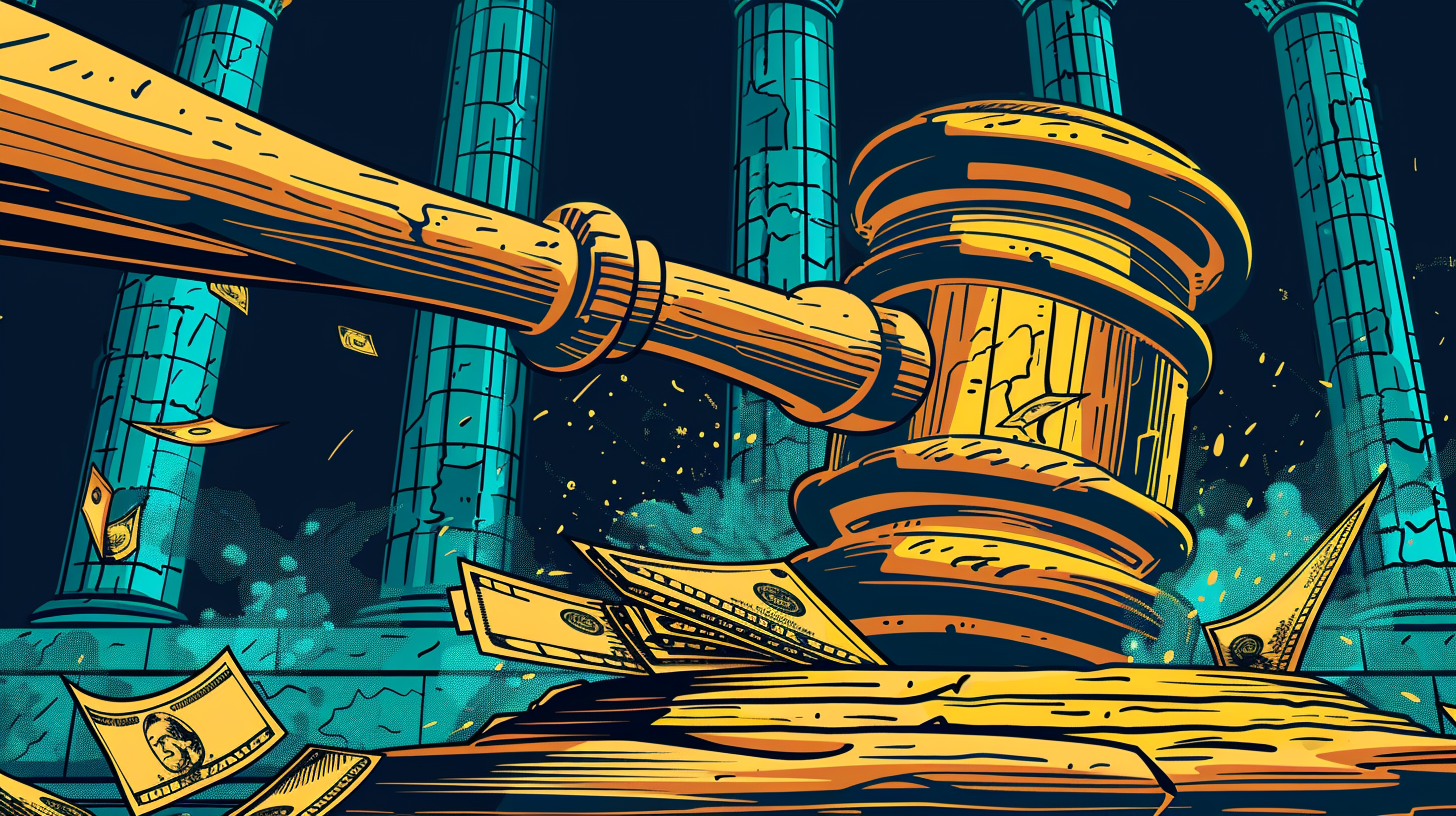Navigating the Seas of Change: How the SEC’s $1.8 Million Fine Sets a New Course for Crypto Regulations
SEC’s $1.8 Million Penalty in Debt Box Case: A Turning Point for Crypto Regulation?
The recent Debt Box case has rocked the boat across the financial sector. The U.S. Securities and Exchange Commission (SEC) faced a hefty $1.8 million penalty, creating waves that reach far beyond traditional finance, straying into the vibrant shores of the cryptocurrency world. At Loffa Interactive Group, where technology meets financial savvy, we’ve been eyeing the horizon and what this development means for the crypto seascape and beyond.
The Ripple Effect: Understanding the Impact
 The SEC’s hefty fine underscores a pressing need for crystal-clear crypto regulation. As captains of the financial industry, we recognize the importance of sailing in regulated waters to safeguard the market’s integrity. The colossal fine slapped on the SEC could very well be a beacon for regulatory reform, illuminating the path to more consistent rules for the cryptocurrency ocean.
The SEC’s hefty fine underscores a pressing need for crystal-clear crypto regulation. As captains of the financial industry, we recognize the importance of sailing in regulated waters to safeguard the market’s integrity. The colossal fine slapped on the SEC could very well be a beacon for regulatory reform, illuminating the path to more consistent rules for the cryptocurrency ocean.
However, this shakeup also beckons a tidal shift, urging the SEC and other watchdogs to evolve with the currents of crypto innovation. Policies and guidelines need to adapt to the unique nature of blockchain and its digital treasures, ensuring a balance between innovation and investor protection.
Navigating Regulatory Waters with Loffa Interactive
At Loffa Interactive, our arsenal—featuring Freefunds Verified Direct (FVD) and the Prime Broker Interactive Network (PBIN)—equips financial firms to chart through regulatory reefs with ease. Simplifying compliance tasks like managing Letters of Free Funds and navigating prime broker agreements, we ensure that your voyage through financial regulations is both compliant and efficient.
Diving Deeper: The Core Impacts on Prime and Executing Brokers
Prime Brokers: A New Compass for Compliance
For Prime Brokers, the shifting regulatory tsunami could mean navigating through more complex compliance currents. The SEC’s emphasis on stringent oversight is a clarion call for embracing solutions like PBIN. This tool acts as a digital compass, offering Prime Brokers a clearer direction in managing F1SA, SIA-150, and SIA-151 forms. It’s not just about compliance; it’s about steering through regulatory storms with newfound agility and precision.
Executing/Clearing Brokers: Charting Through Enhanced Transparency
Executing or Clearing Brokers find themselves at the confluence of innovation and regulation. With penalties like those in the Debt Box case shining a spotlight on the need for transparent operations, these brokers are under pressure to modernize their compliance frameworks. Leveraging FVD, brokers can now ensure transparency in trade settlements, aligning with Regulation T requirements effortlessly. It’s a technological sail that cuts through the heavy seas of paperwork and manual verifications, propelling brokers towards operational efficiency and regulatory conformance.
Setting Sail Towards a Regulated Future
 The Debt Box case, with its significant penalties and warnings, serves not only as a call to action but as a guiding star towards a future where the cryptocurrency market matures within a robust regulatory framework. By championing innovation, fostering dialogue, and prioritizing investor protection, we embark on a collective voyage towards a horizon where compliance and digital advancement sail side by side.
The Debt Box case, with its significant penalties and warnings, serves not only as a call to action but as a guiding star towards a future where the cryptocurrency market matures within a robust regulatory framework. By championing innovation, fostering dialogue, and prioritizing investor protection, we embark on a collective voyage towards a horizon where compliance and digital advancement sail side by side.
Loffa Interactive stands ready, compass in hand, to navigate this journey with our clients. Together, we’ll explore the vast possibilities of a compliant, secure, and prosperous digital finance realm. Let’s set sail towards that future, shall we?


 In the labyrinth of financial regulations, the U.S. Securities and Exchange Commission’s (SEC) introduction of Rule 10c-1a emerges as a significant beacon, aiming to elevate transparency and efficiency within the securities lending market. Yet, it’s the impending transition to a T+1 settlement cycle that ignites urgency, compressing the timeline for firms to adapt. A spotlight on the insights from Kevin McNulty of EquiLend during a recent FTF News interview reveals the impending challenges and underscores the imperative of a swift, strategic response.
In the labyrinth of financial regulations, the U.S. Securities and Exchange Commission’s (SEC) introduction of Rule 10c-1a emerges as a significant beacon, aiming to elevate transparency and efficiency within the securities lending market. Yet, it’s the impending transition to a T+1 settlement cycle that ignites urgency, compressing the timeline for firms to adapt. A spotlight on the insights from Kevin McNulty of EquiLend during a recent FTF News interview reveals the impending challenges and underscores the imperative of a swift, strategic response.
 The financial landscape quaked as the Securities and Exchange Commission (SEC) recently imposed a hefty $10 million fine on Intercontinental Exchange (ICE). This wasn’t just a slap on the wrist; it was a clear signal. ICE’s failure to adhere to the pillars of Regulation Systems Compliance and Integrity (Reg SCI) not only spotlighted the critical need for fortified cybersecurity but also underscored the SEC’s resolve in ensuring market stability and investor protection.
The financial landscape quaked as the Securities and Exchange Commission (SEC) recently imposed a hefty $10 million fine on Intercontinental Exchange (ICE). This wasn’t just a slap on the wrist; it was a clear signal. ICE’s failure to adhere to the pillars of Regulation Systems Compliance and Integrity (Reg SCI) not only spotlighted the critical need for fortified cybersecurity but also underscored the SEC’s resolve in ensuring market stability and investor protection.